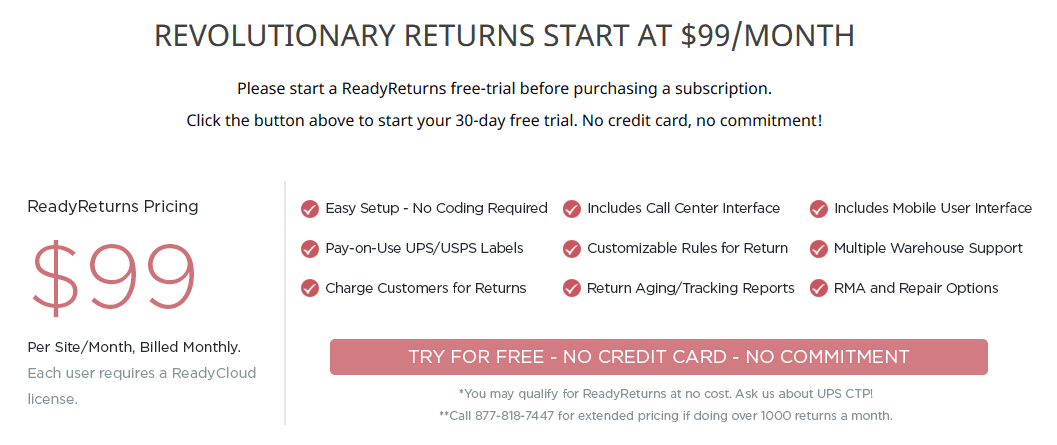Any way that you slice it, ecommerce returns are going to happen. Studies have found that between 5%-33% of products that are purchased over the web are ultimately returned. How you manage ecommerce returns can mean a stark difference in your bottom line and in attracting future profits. Consumers are persistently seeking a resolute way to return items that they buy online. As compared to the brick and mortar experience, where they can simply head back to the store and exchange a product they’ve purchased, online sales require more work. But they don’t and shouldn’t have to if you really want to keep your customers base happy.
Update Your Returns Policy
The first place that you are going to want to start is with your online retail returns policy, which will outline and define what you have to offer. Bear in the mind that over 60% of consumers take the time to read this returns policy, so what you say in it and what you offer and guarantee matter greatly.
The return policy that you offer is, after all, the very backbone of your online store. If you make it difficult for consumers to return products online, they will simply search for the next store they find that doesn’t. But the returns policy aside, there are several other methods you can use to reduce the rate of online returns and to better manage ecommerce returns.
Integrate Sizing Apps for Fashion E-commerce
Sizing apps have proven to really help fashion ecommerce retailers reduce the rate of returns exponentially. They are offered by a variety of different services providers, and they help clothing shoppers better find the right clothing size. Since clothing has one of the highest rates of returns in ecommerce, some retailers have been able to reduce the rate of returns by 50% or more by just using a sizing app.
Being able to manage returns and reduce them in fashion ecommerce can be accomplished by using a few simple sizing integrations, providing adequate sizing charts, zoom-in options on finer detail items and even video. These simple updates to your website can drastically reduce the rate of returns while also simultaneously improving the sales and conversion funnel because it helps increase consumer confidence.
Advertise Your Returns Policy
Another commonly overlooked aspect that e-retailers miss when they try to manage ecommerce returns is with letting consumers know about the returns policy in the first place. Stores like Nordstrom’s, Trunk Club and Zappos prominently advertise their returns policy site-wide. They do this to improve consumer confidence.
These retailers also know that the most loyal shoppers make the most returns, too. Therefore, there’s no reason to dissuade happy spenders from buying more items, when these purchases ultimately add up to long term profits for the retailer. If consumers are satisfied that they won’t have to worry about making a return before they buy an item, they will buy more items more often, and your returns rate shouldn’t even climb that much.
Systematize How You Manage Ecommerce Returns
Another aspect of how to properly manage ecommerce returns is found with systemizing your returns process. This involves you automating it and letting customers be able to process a return from your website with minimal steps and user-friendly functionality.
To do so, you’ll want an automated system to manage ecommerce returns like ReadyReturns in place. Unless you have deep, deep pockets, it’s unlikely that you will be able to invest the necessary funds to have a custom, enterprise-grade system put into place. But systems like ReadyReturns are web-based and instantly integrate to automate returns. This saves you time and money by doing the heavy lifting for you, while also telling customers that returns are not a hassle.
Offer In-Store Credit to Earn Future Business
Another way to better manage ecommerce returns is to earn back customer business by offering in-store credit for future purchases. For example, if a customer needs to return a product, so be it. But that doesn’t mean that you have to only offer them their money back. Instead, you can offer them in-store credit with a 10% bonus addition as one option, and see if they take that instead of the cash refund.
You’ll find that a lot of customers actually still want to shop at your store even if they had to make a return in a the first place. Stores like Zappos say that as much as 50% of all products ordered from them are returned. But their customers keep on coming back because returns are simple, easy, transparent and straightforward. Bear this in mind as you approach the creation of your returns policy, and you can reduce returns while improving sales and profiting from the returns that you know you need to accept anyways.

